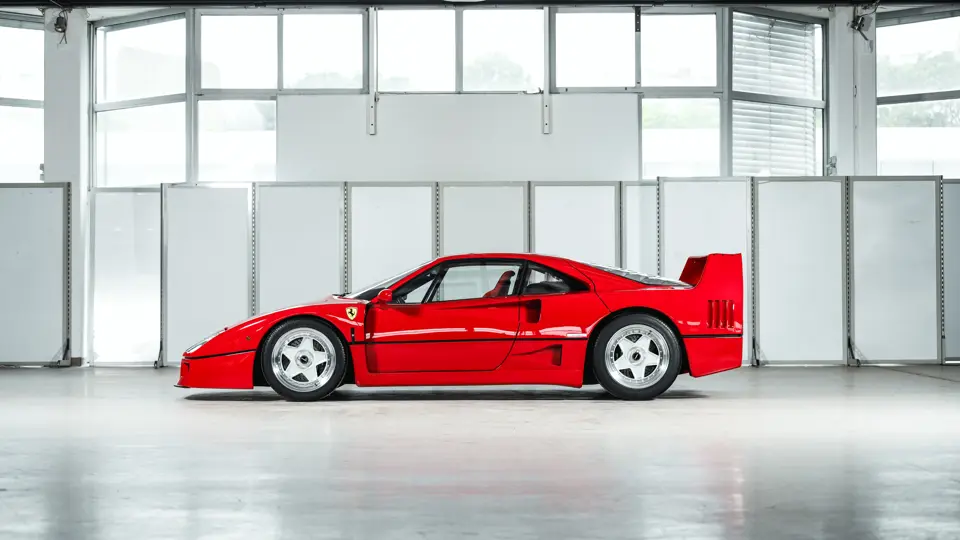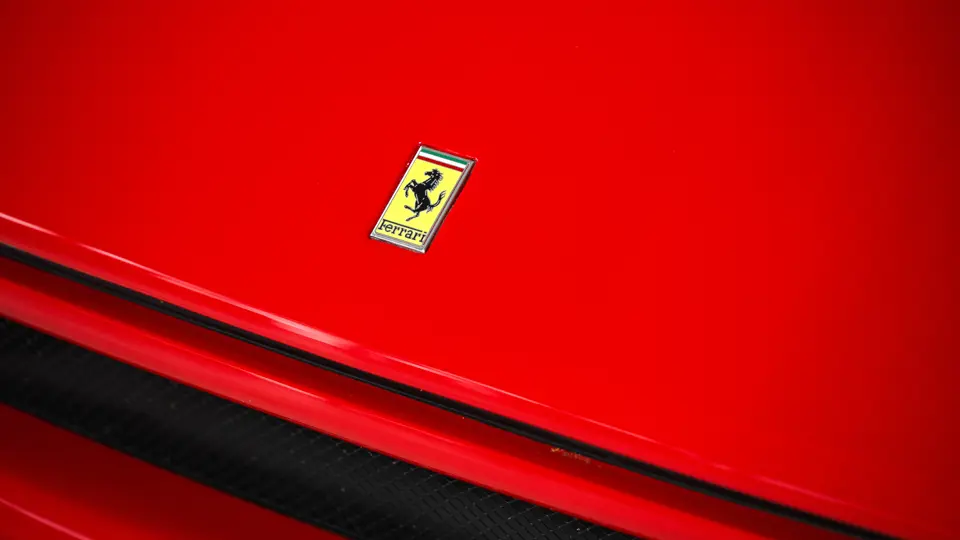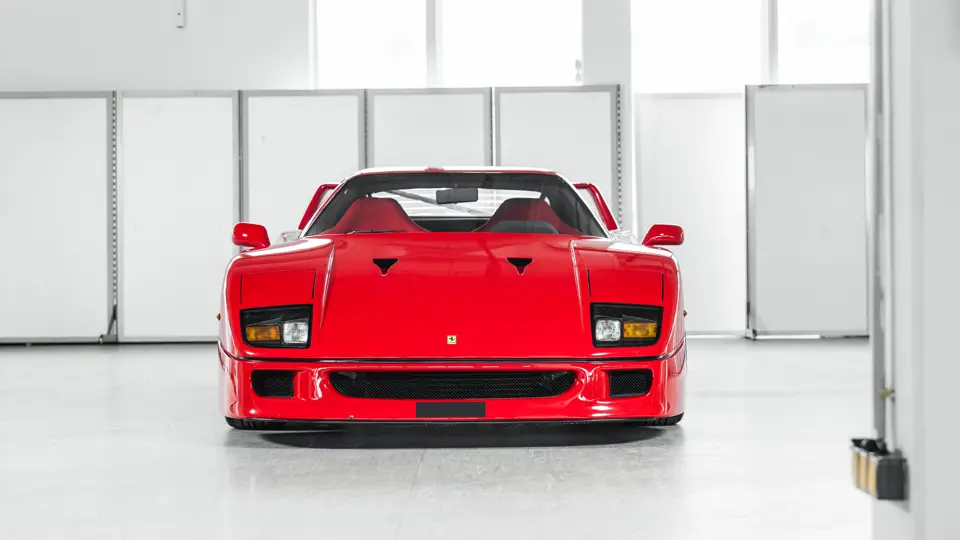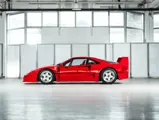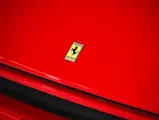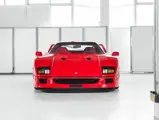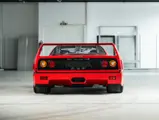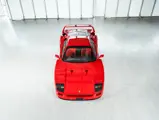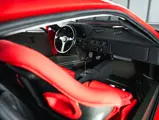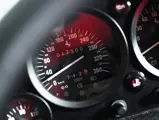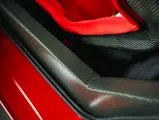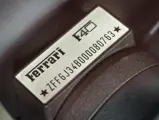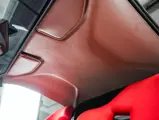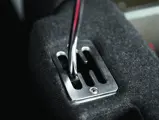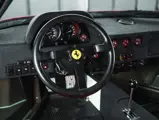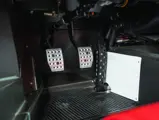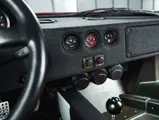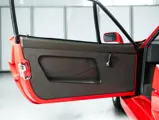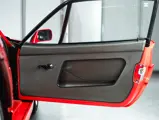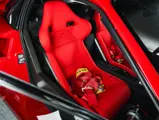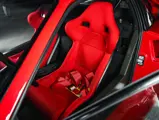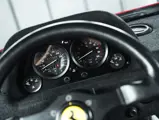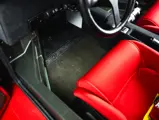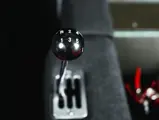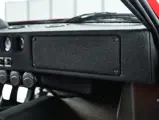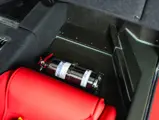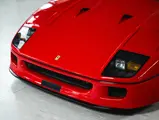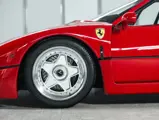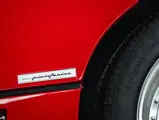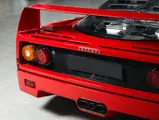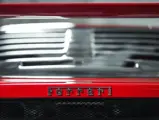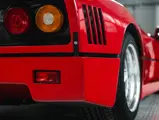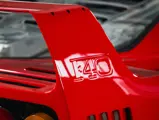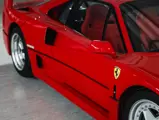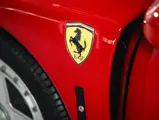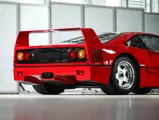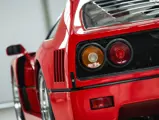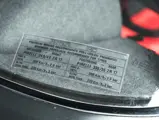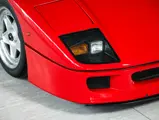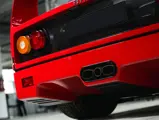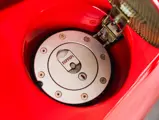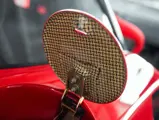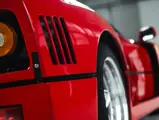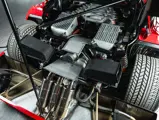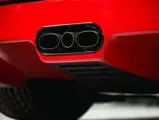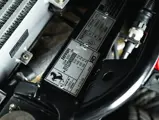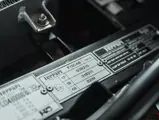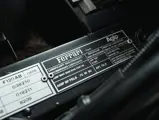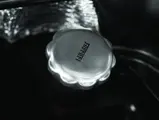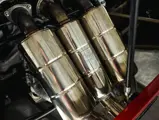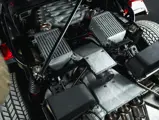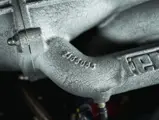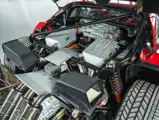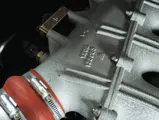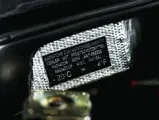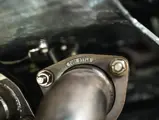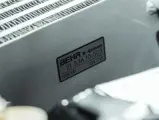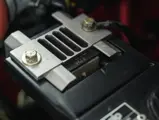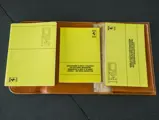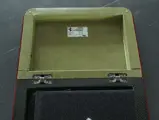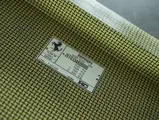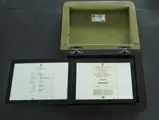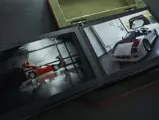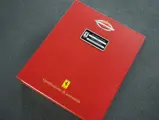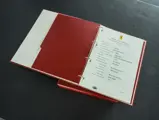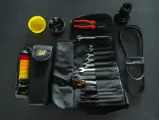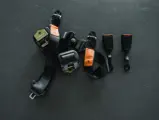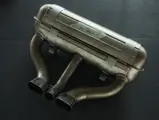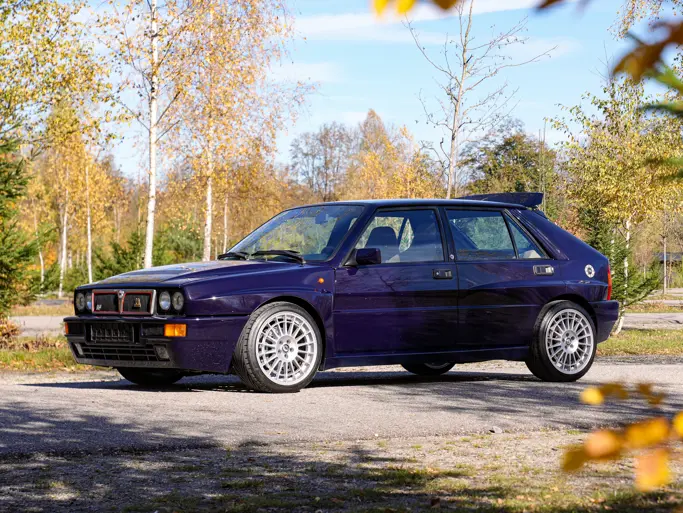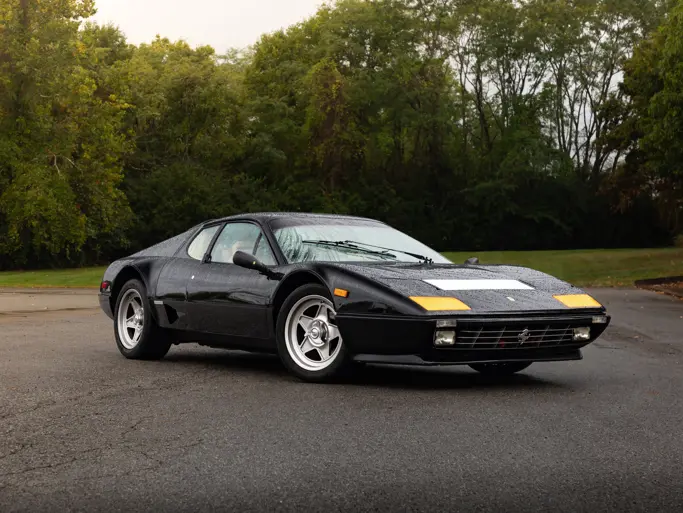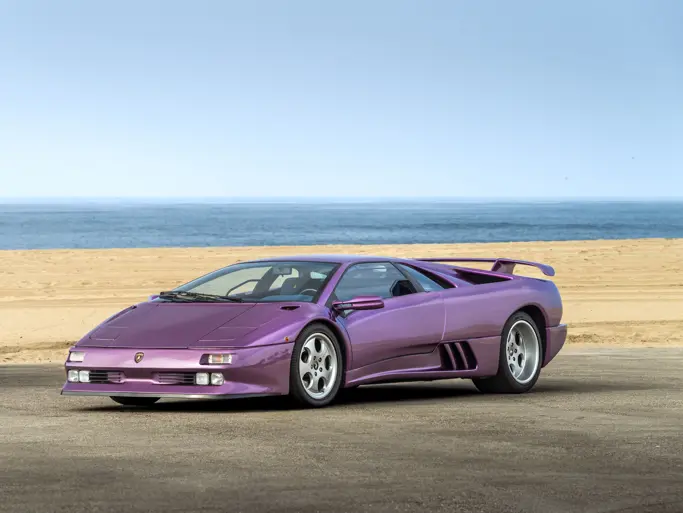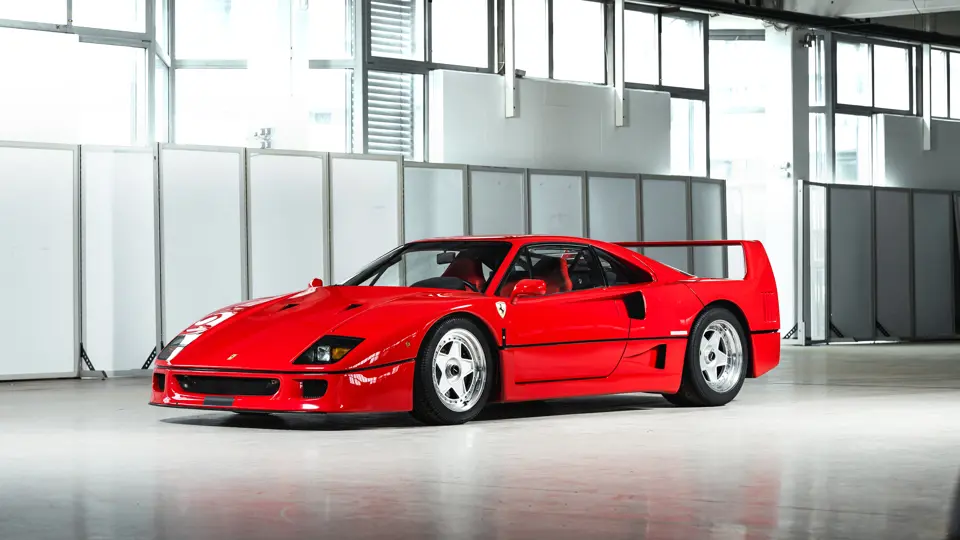
1989 Ferrari F40
{{lr.item.text}}
€2,817,500 EUR | Sold
{{bidding.lot.reserveStatusFormatted}}
- A highly desirable “non-cat, non-adjust” example of the legendary Ferrari F40
- Benefits from a 2021 restoration performed by marque specialists Carrozzeria Zanasi and Carrozzeria Egidio Bonfatti; work documented in an accompanying photo album
- Retains its matching-numbers chassis, body, engine, and gearbox
- Awarded Ferrari Classiche certification in April 2022; offered with its “Red Book”
- Further accompanied by a tool roll, Agip tyre kit, plus original exhaust and seatbelts
- The odometer displayed 17,300 kilometres at the time of cataloguing
- Esemplare altamente desiderabile, senza catalizzatore e sospensioni regolabili, della leggendaria Ferrari F40
- Restaurata nel 2021 dagli specialisti del marchio della Carrozzeria Zanasi e della Carrozzeria Egidio Bonfatti; interventi documentati nell’album fotografico a corredo
- Telaio, carrozzeria, motore e cambio originali
- Certificazione Ferrari Classiche assegnata ad aprile 2022 e “libro rosso”
- Rotolo portattrezzi, kit di riparazione pneumatici Agip, impianto di scarico e cinture di sicurezza originali
- 17.300 chilometri al momento dell’inserimento a catalogo
Famously the final design to be signed off by Enzo Ferrari, the F40 of 1987 was initially forecast for a 400-strong production run in celebration of the marque’s 40th anniversary. However, Maranello records show that this figure eventually stretched to 1,315 units as buyers kept being enticed. Little wonder, given the intoxicating recipe of a lightweight Kevlar and carbon fibre construction being propelled by a twin-turbocharged 3-litre V-8 that delivered 478 horsepower to result in a top speed of 324 km/h.
Of those cars, chassis number 80763 offered here was completed on 27 July 1989 and delivered to its first owner one week later on 3 August via Garage Francorchamps SA in the Belgium capital of Brussels. Built to European specification, this is an example of the highly sought-after “non-cat, non-adjust” configuration. A maintenance summary, which is available to view on file, indicates that the F40 was sparingly used during its early life. In September 1990, the odometer was noted at 1,763 kilometres before an October 1995 reading was taken at just 3,895 kilometres.
The Ferrari then moved to the United Kingdom in 1997, where it remained for more than two decades. Under the care of a new owner, the car was submitted to Italy in 2021 for a complete rotisserie restoration on the doorstop of the Ferrari factory. The mechanical overhaul was entrusted to Maranello-based specialist Carrozzeria Zanasi, while the bodywork and repaint were handled by Carrozzeria Egidio Bonfatti in Modena, prior to the application of paint-protection film at the front. The restoration has been captured in a complementing photo album, which is beautifully housed in a matching-colour carbon fibre and Kevlar case.
Once finished, the F40 enjoyed a momentous April 2022. That month, it was registered in France in addition to being awarded prestigious Ferrari Classiche certification in recognition of its matching-numbers chassis, body, engine, and gearbox. The car remained with its then-custodian until May 2023, at which point it was purchased by the consigning owner.
Alongside the photo album and “Red Book”, this F40 is accompanied by a tool roll, Agip tyre sealant kit, and a history summary compiled by marque expert Marcel Massini. He notes that the car was previously maintained by Ferrari dealer Motor Service of Modena and Graypaul Motors in the UK. The F40—fitted with a Tubi-style exhaust and harnesses but offered with its originals—displayed 17,300 kilometres on its odometer at the time of cataloguing.
Almost universally regarded as one of the great 20th Century automotive creations, this glorious “non-cat, non-adjust”, matching-numbers F40 would stand proud as a highlight among any curated car collection.
La F40 del 1987, notoriamente l’ultimo progetto firmato da Enzo Ferrari, era inizialmente prevista per una produzione di 400 esemplari per celebrare il 40° anniversario del marchio. Tuttavia, la documentazione prodotta da Maranello mostra che il numero originario fu incrementato man mano che sempre più clienti si innamoravano di questo modello, fino a un totale di 1.315 esemplari. Il suo fascino non stupisce considerando l’inebriante miscela creata da una struttura leggera in Kevlar e fibra di carbonio, unita a un motore V-8 con doppio turbocompressore da 3 litri, una potenza di ben 478 cavalli e una velocità massima di 324 km/h.
La vettura con numero di telaio 80763 qui proposta fu ultimata il 27 luglio 1989 e consegnata al suo primo proprietario la settimana seguente, il 3 agosto, tramite la concessionaria Garage Francorchamps SA di Bruxelles, in Belgio. Questo esemplare con specifica europea adotta l’ambita configurazione priva di catalizzatore e sospensioni regolabili. Nel faldone è possibile consultare la documentazione relativa agli interventi di manutenzione, da cui risulta che la F40 fu guidata sporadicamente nei suoi primi anni di vita. Nel settembre 1990 il contachilometri segnava solamente 1.763 chilometri, mentre nell’ottobre 1995 era salito ad appena 3.895.
Nel 1997 la Ferrari attraversò la Manica e rimase nel Regno Unito per oltre due decadi. Il nuovo proprietario la trasferì in Italia nel 2021 per sottoporla a un restauro completo e meticoloso non lontano dallo stabilimento Ferrari. La revisione meccanica fu affidata agli specialisti di Maranello della Carrozzeria Zanasi, mentre gli interventi su carrozzeria e verniciatura furono eseguiti dalla Carrozzeria Egidio Bonfatti di Modena, cui seguì l’applicazione di una pellicola protettiva all’anteriore. L’album fotografico a corredo, conservato in una custodia realizzata in Kevlar e fibra di carbonio in tinta, documenta l’intera opera di restauro.
Il mese di aprile 2022 fu davvero epocale per questa F40. Fu infatti immatricolata in Francia e ottenne la prestigiosa certificazione Ferrari Classiche in riconoscimento dei suoi componenti originali: telaio, carrozzeria, motore e cambio. L’auto rimase sotto la stessa proprietà fino al maggio 2023, quando fu acquistata dal conferente.
Oltre all’album fotografico e al “libro rosso”, questa F40 è completa di rotolo portattrezzi, kit di riparazione pneumatici Agip e resoconto storico redatto dall’esperto del marchio Marcel Massini. Massini indica che la vettura era stata precedentemente sottoposta a manutenzione dalle concessionarie Ferrari Motor Service di Modena e Graypaul Motors nel Regno Unito. La F40 monta imbracature e un impianto di scarico in stile Tubi (sono forniti anche i componenti originali) e aveva 17.300 chilometri al momento dell’inserimento a catalogo.
Universalmente considerata uno dei più importanti capolavori automobilistici del XX secolo, questa gloriosa F40 originale senza catalizzatore e sospensioni regolabili sarà il perfetto fiore all’occhiello di qualsiasi collezione.


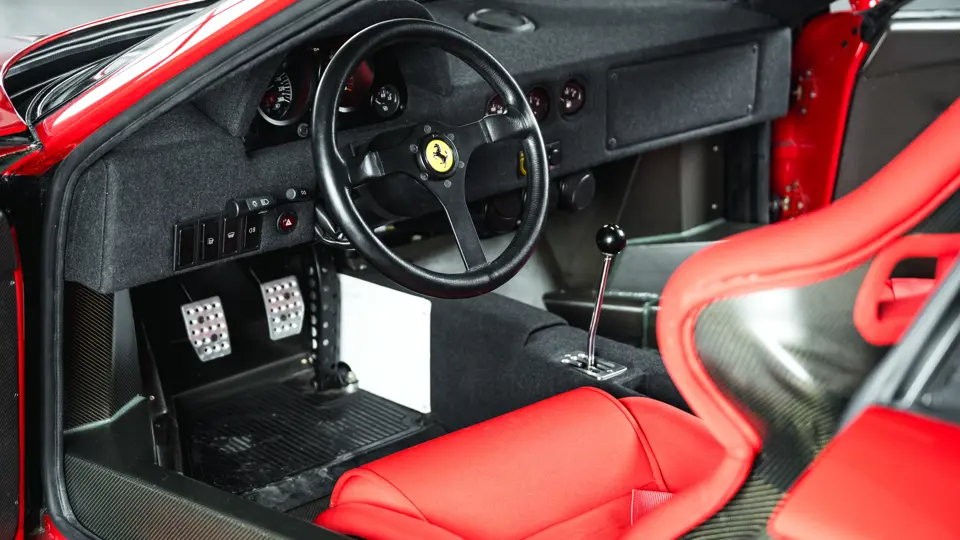

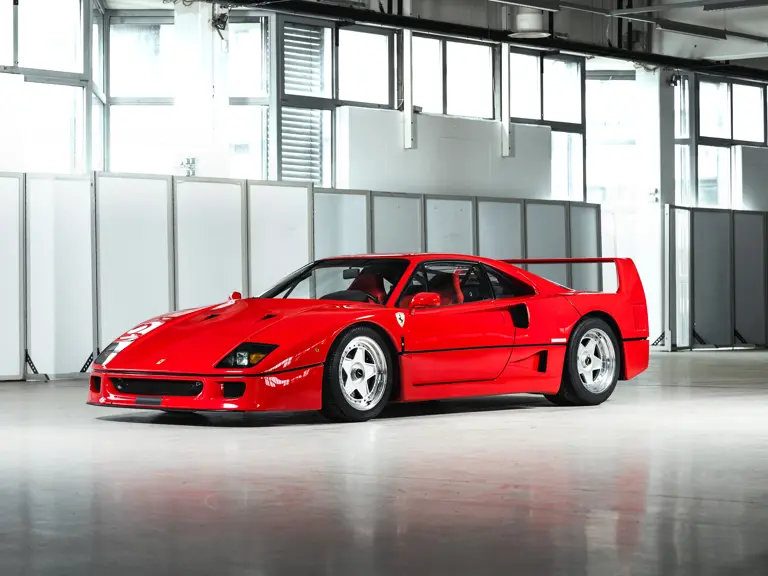
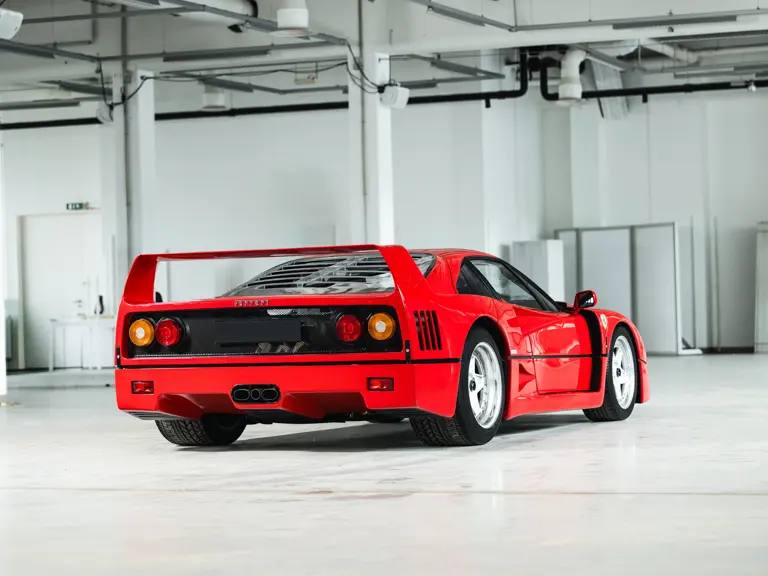



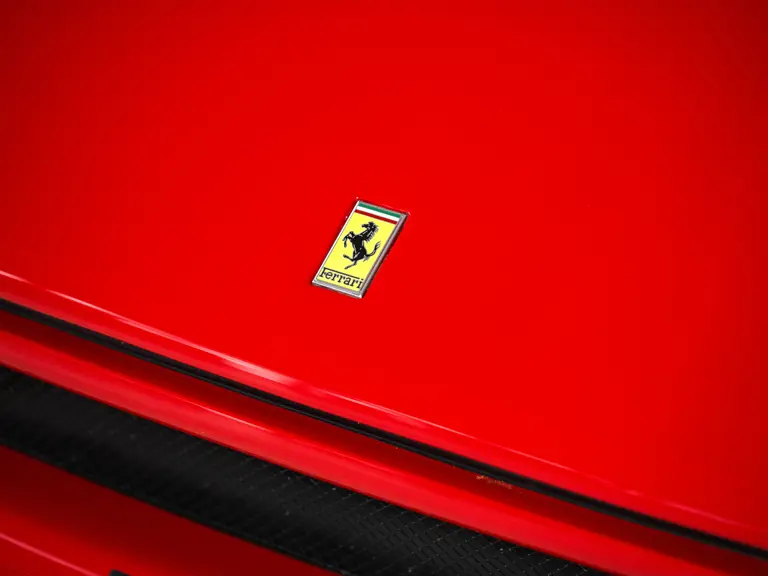



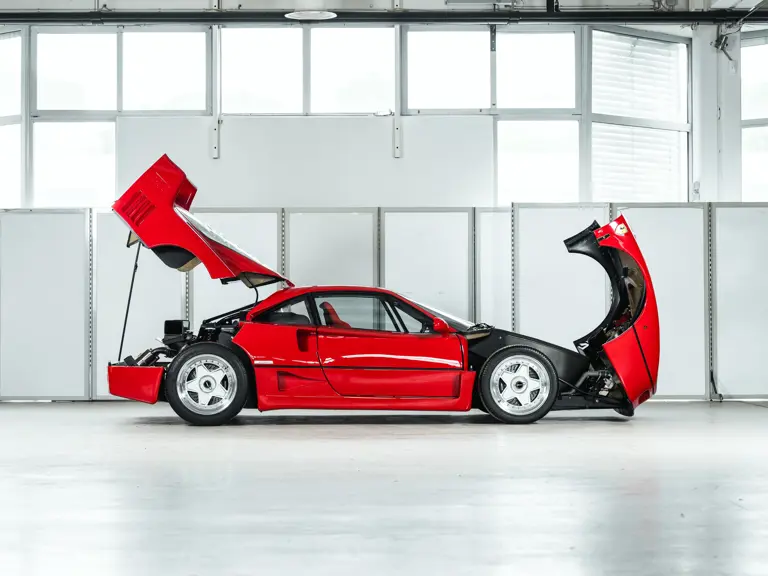

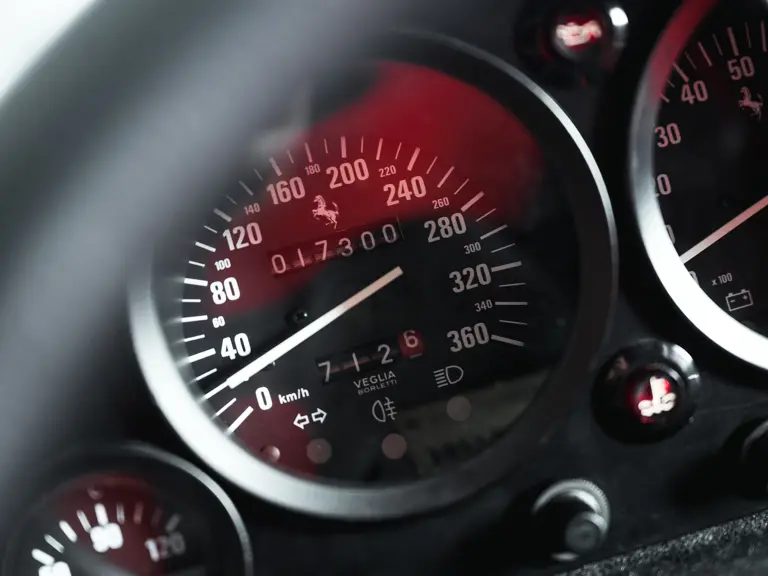



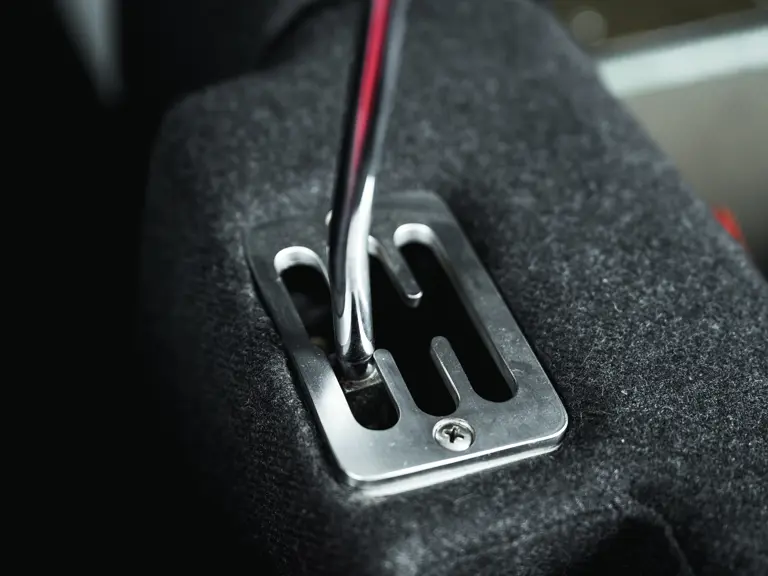


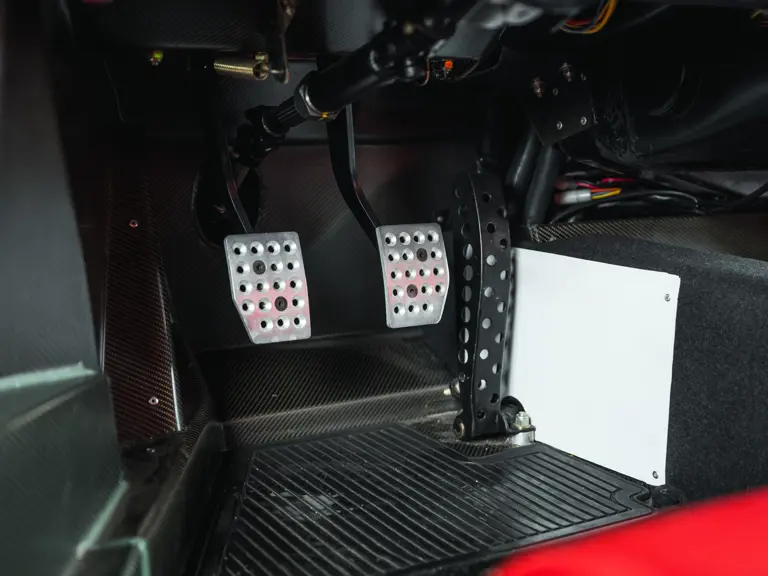

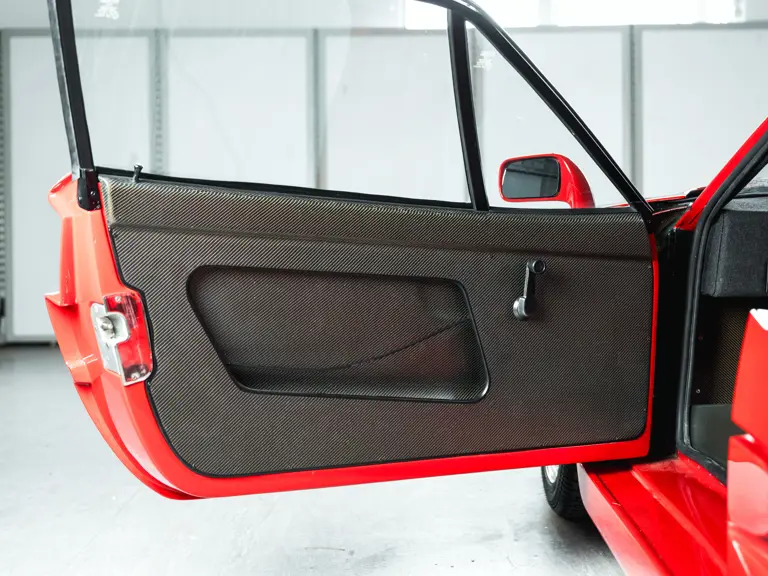
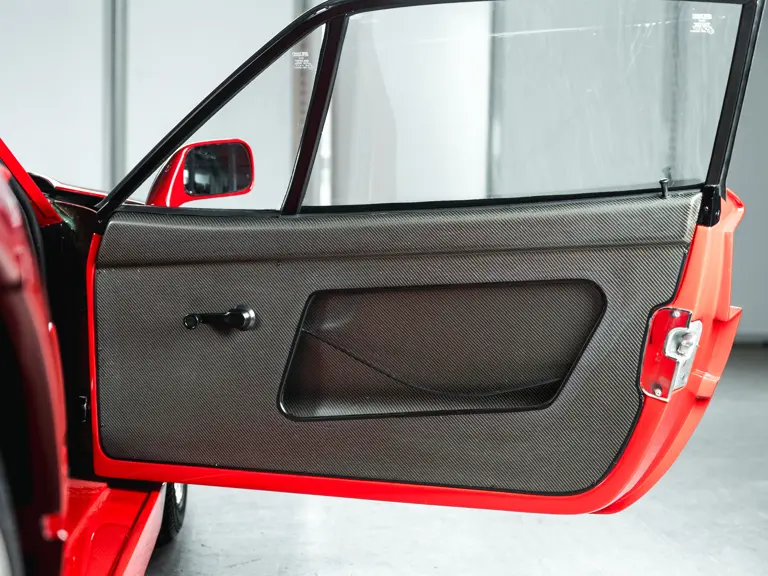




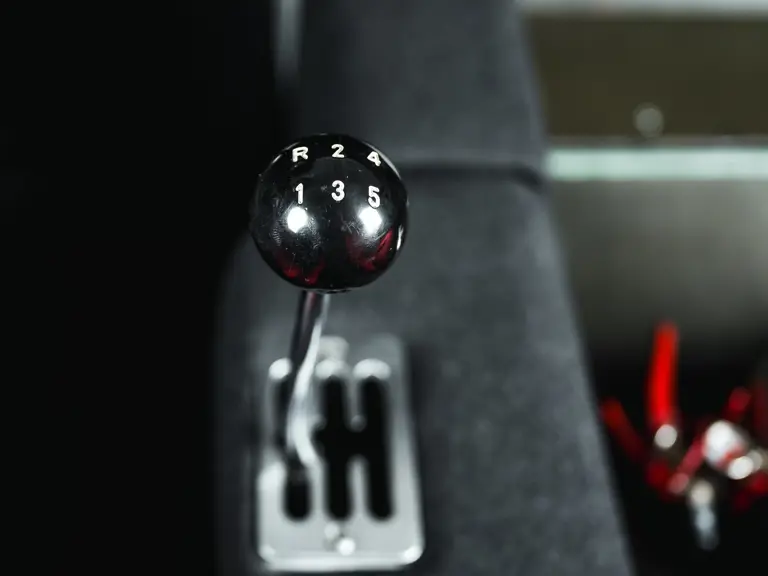

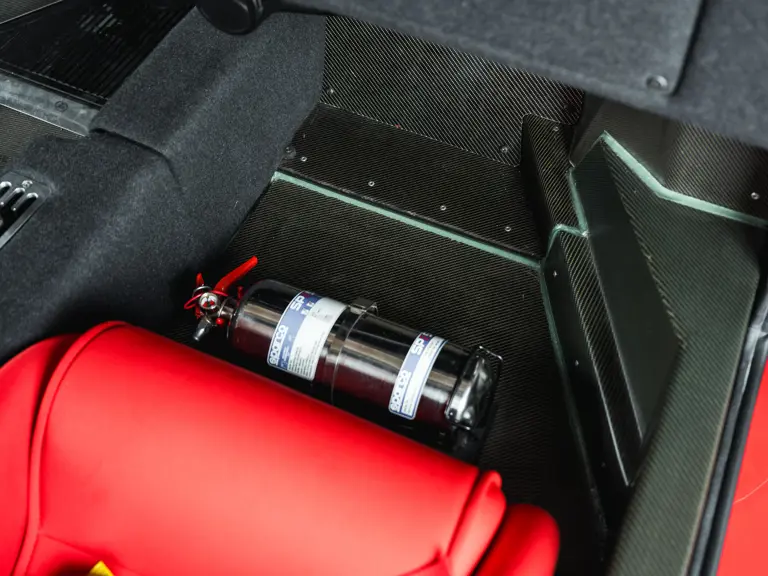
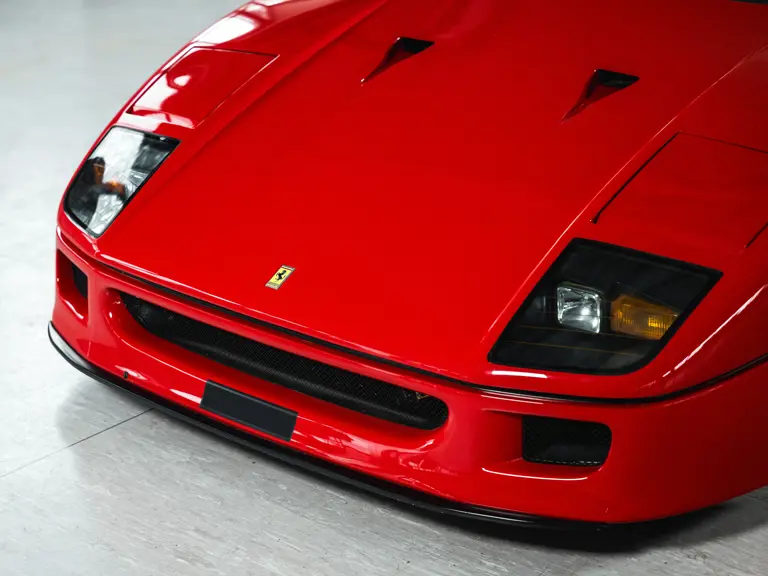


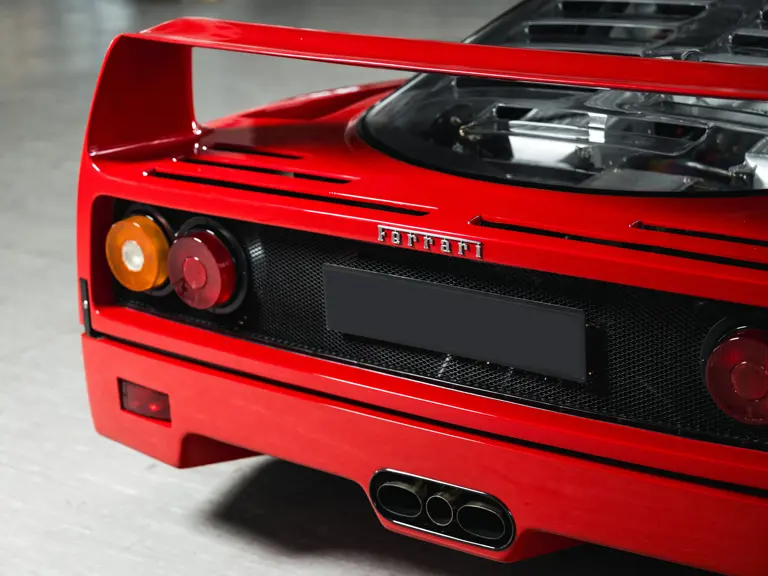



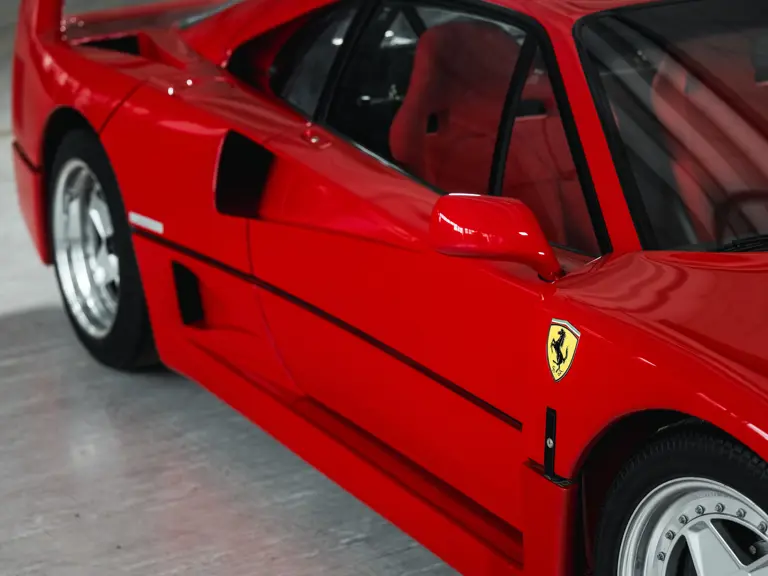




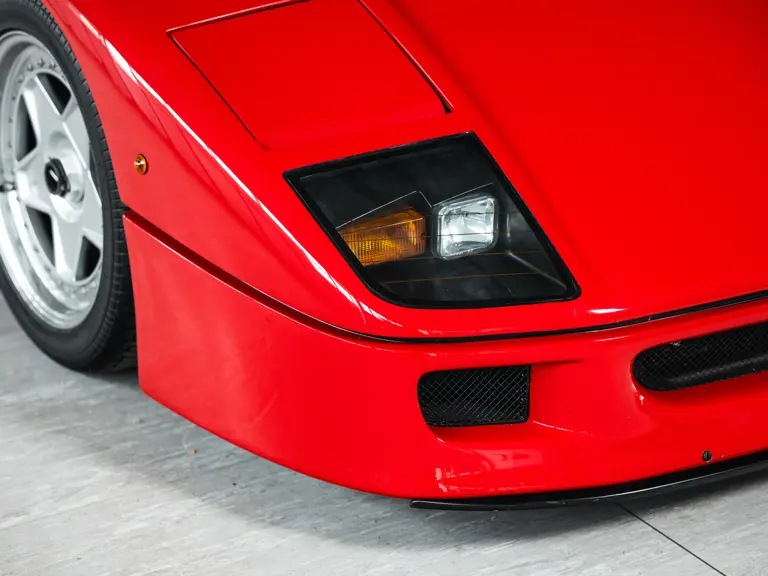

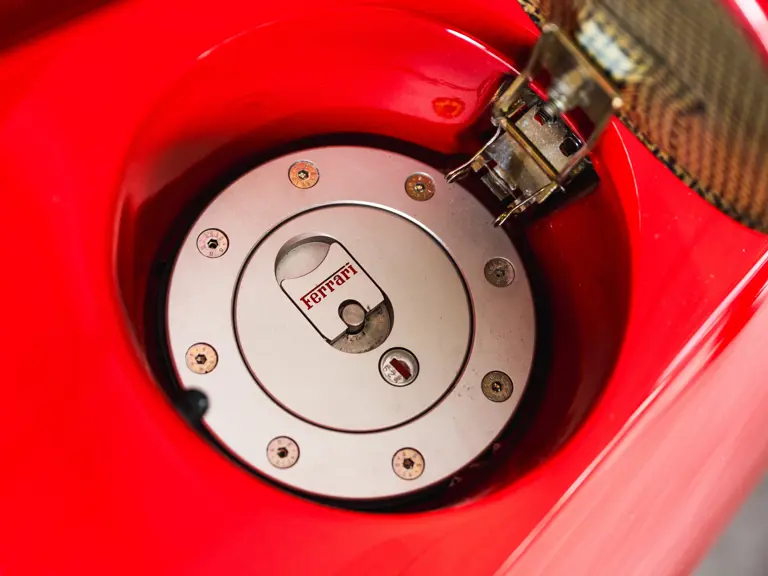
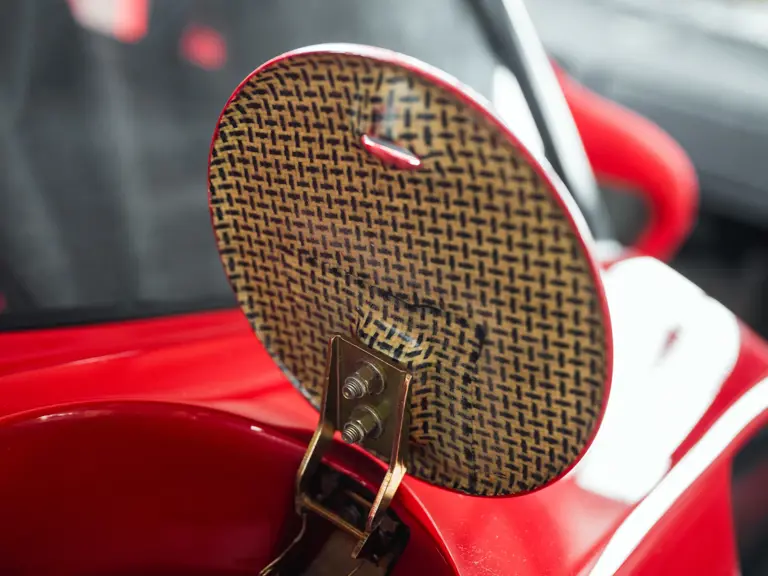
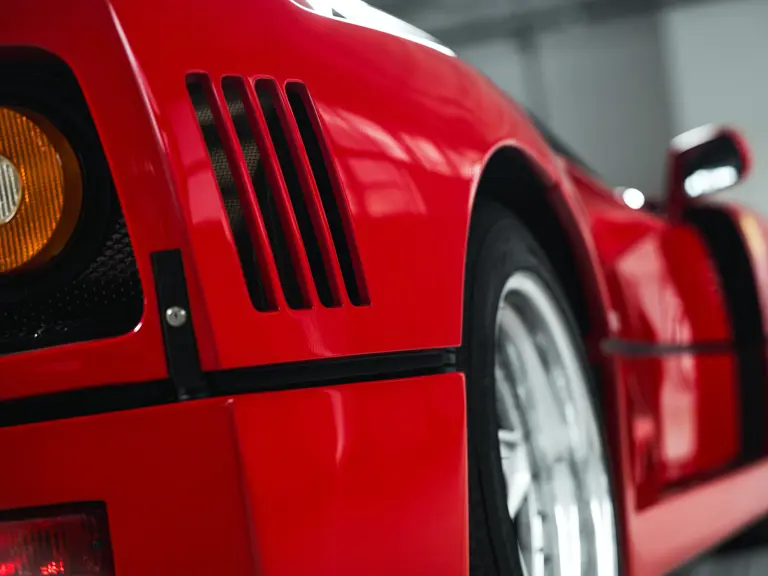


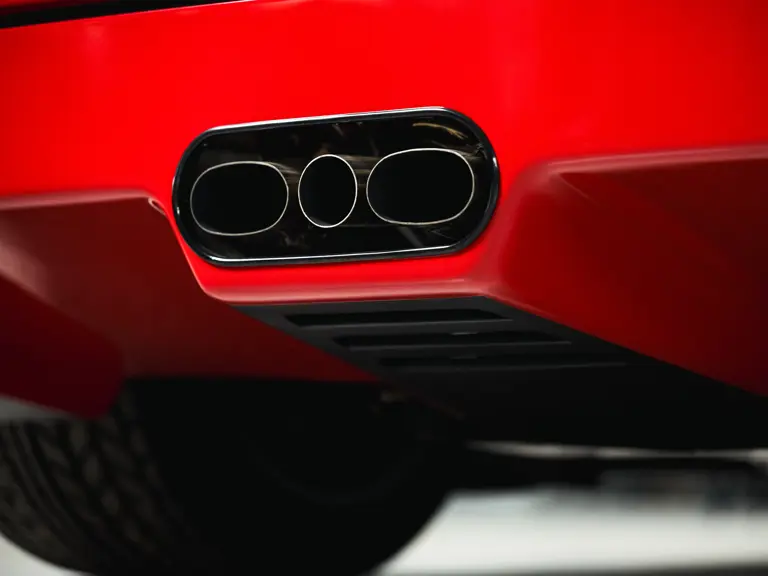


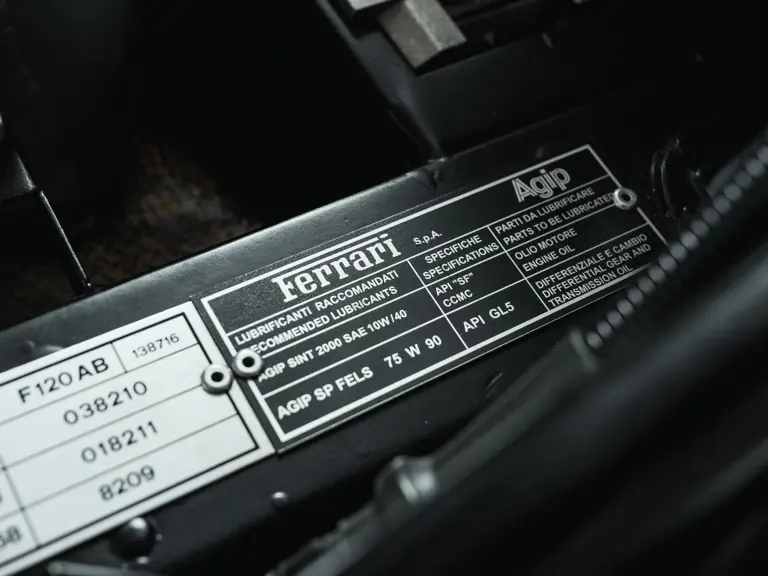


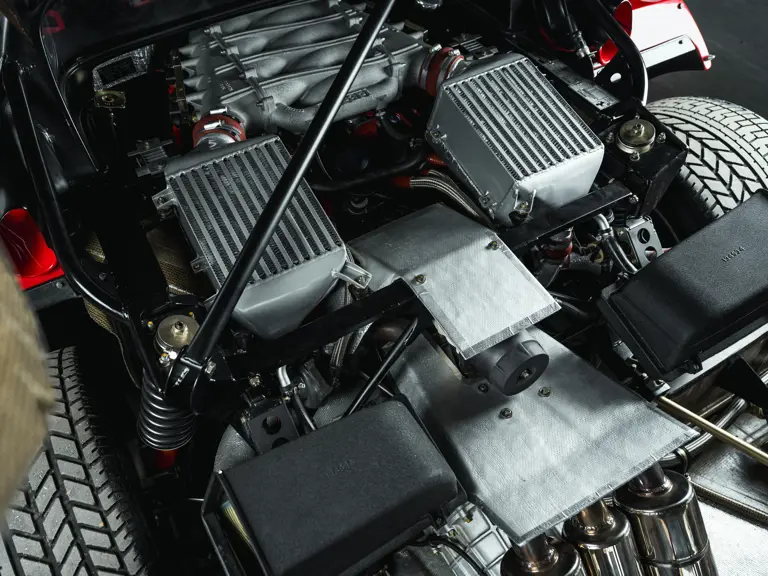





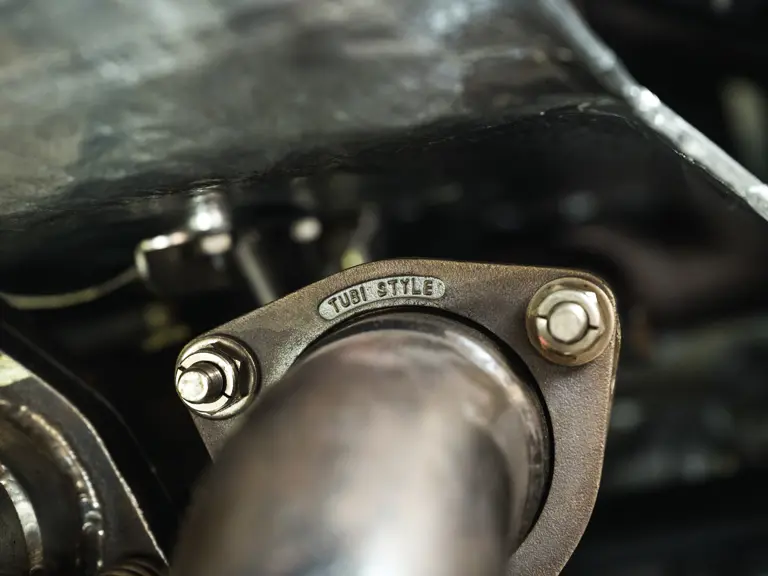

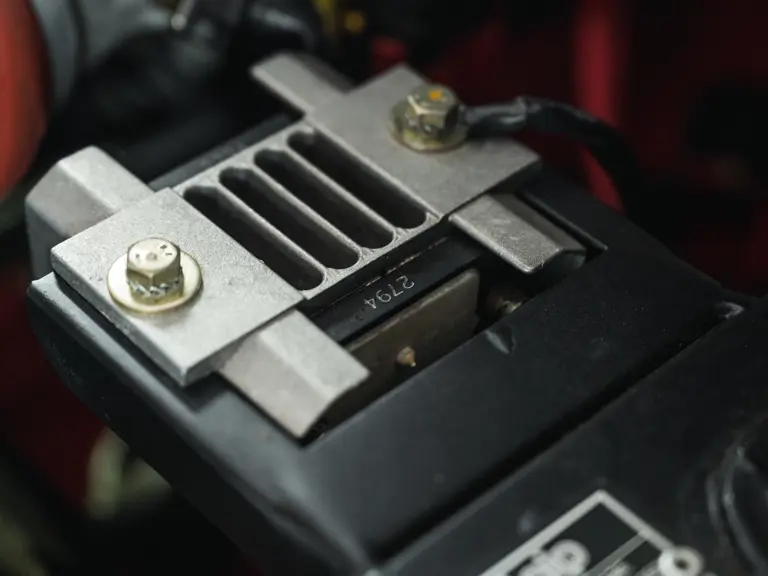
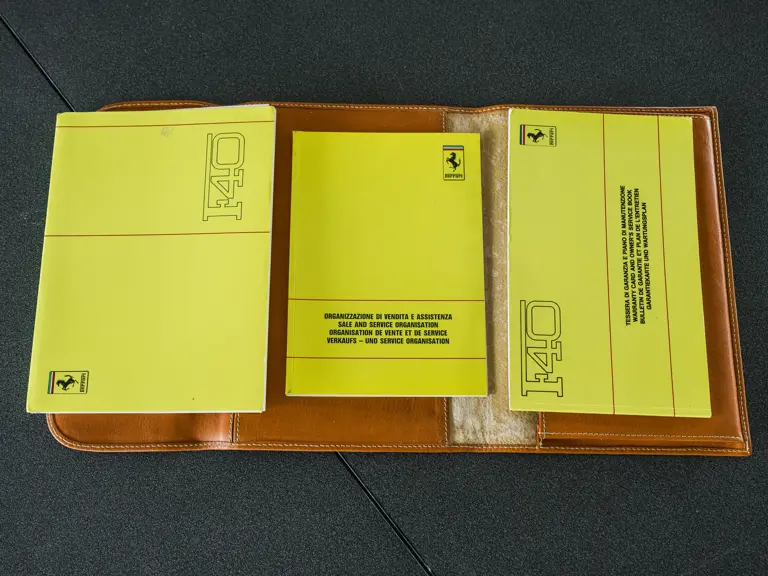


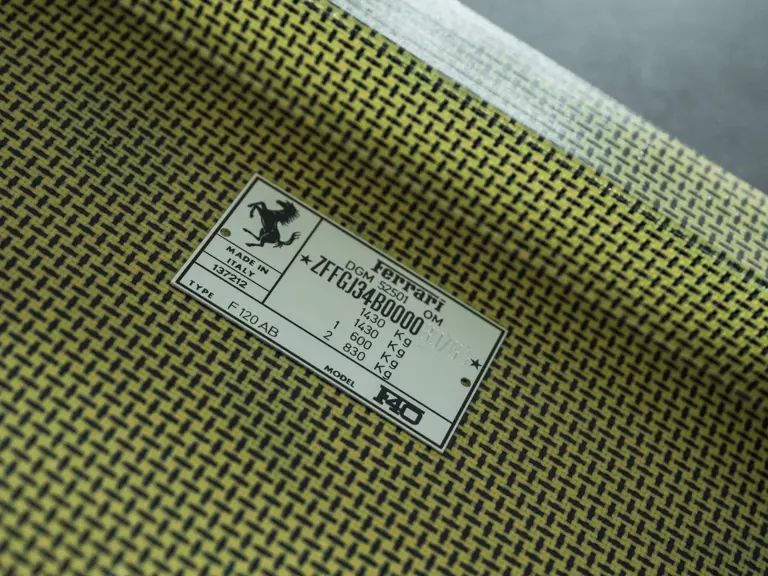
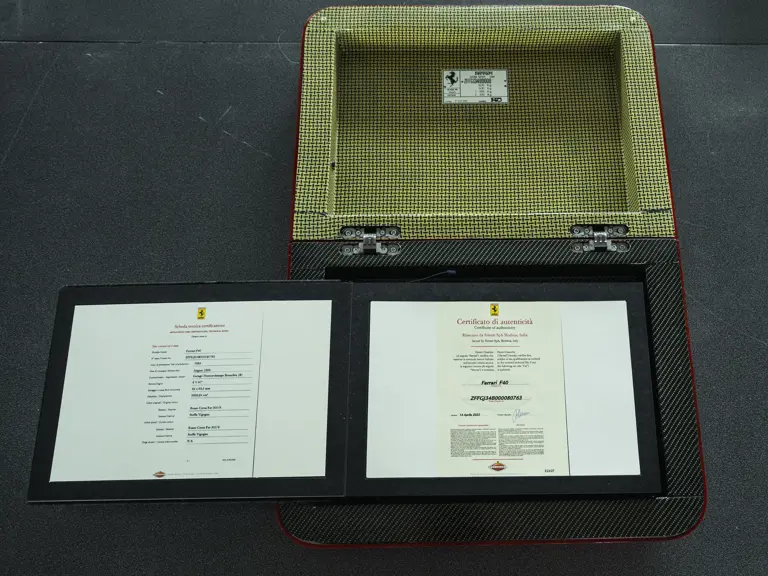

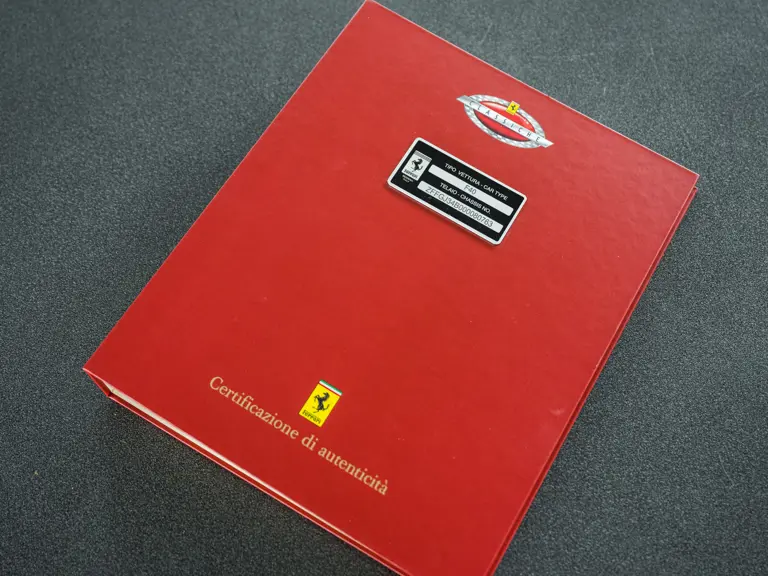



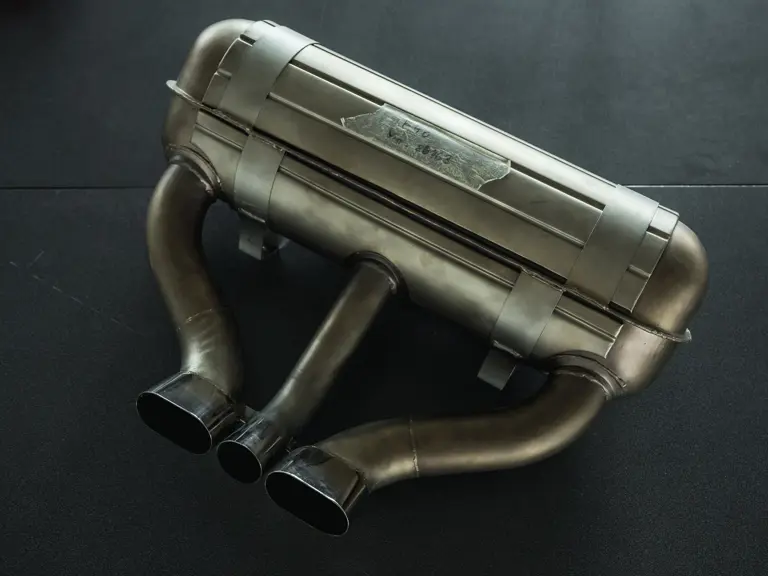

 | Milan, Italy
| Milan, Italy
